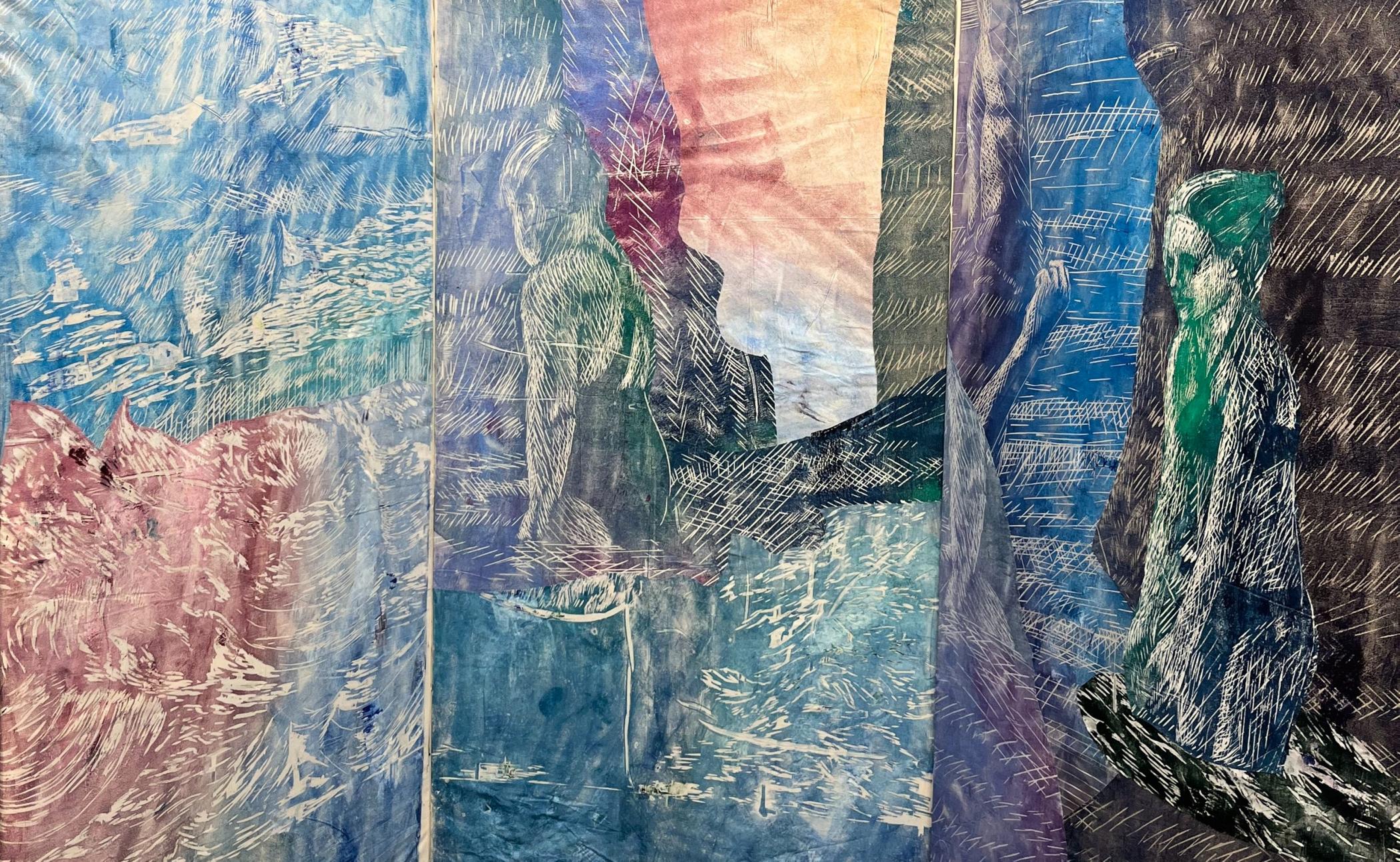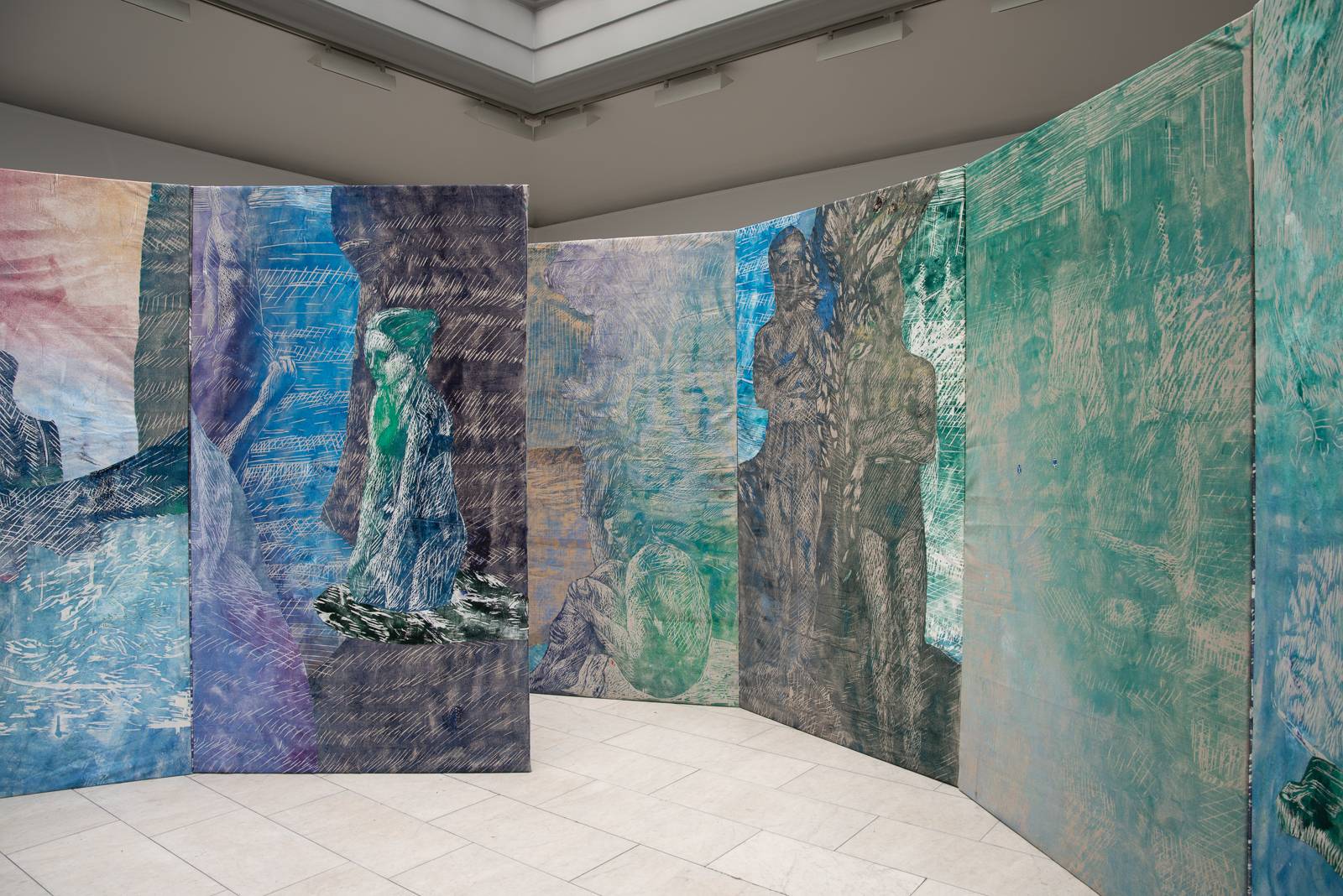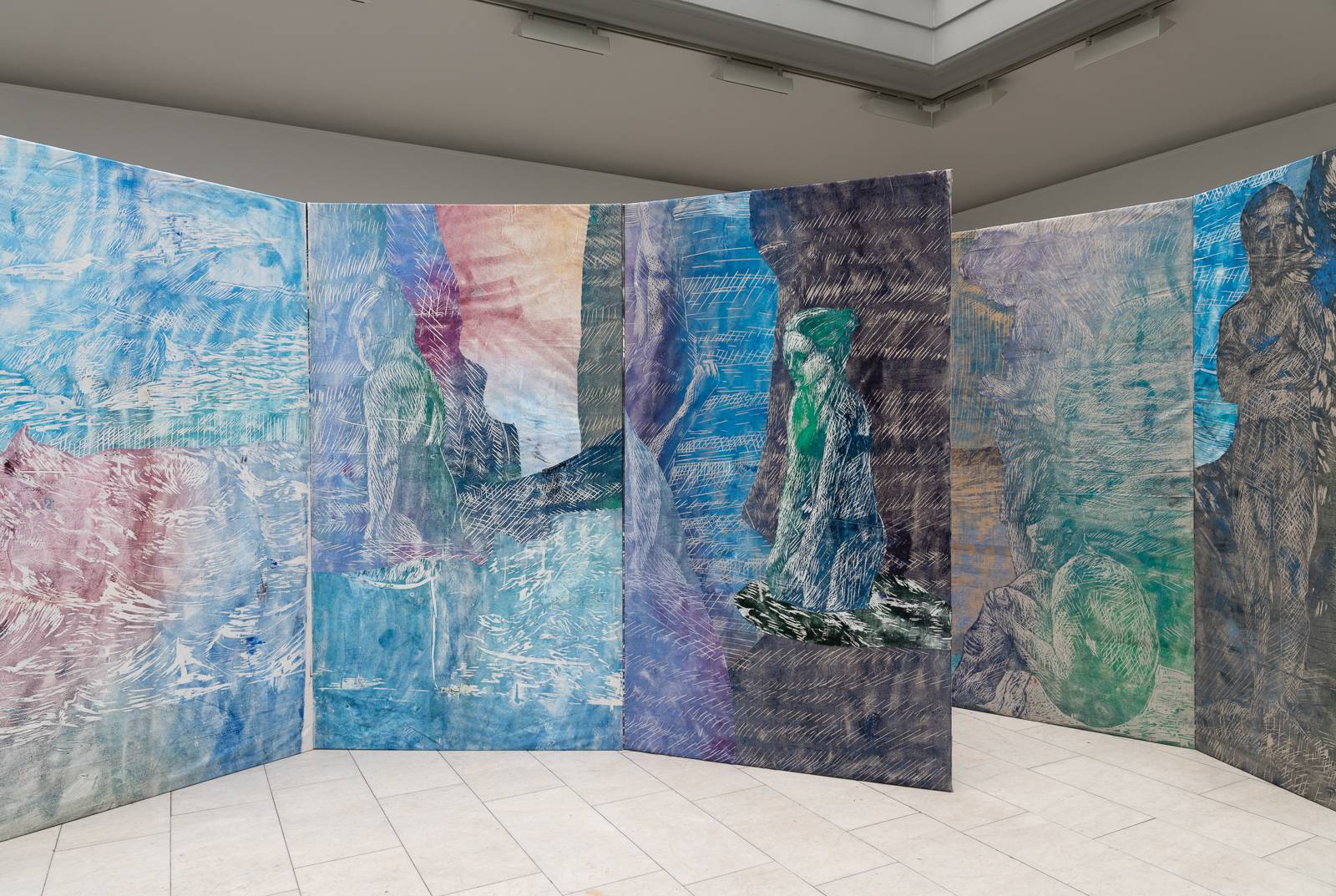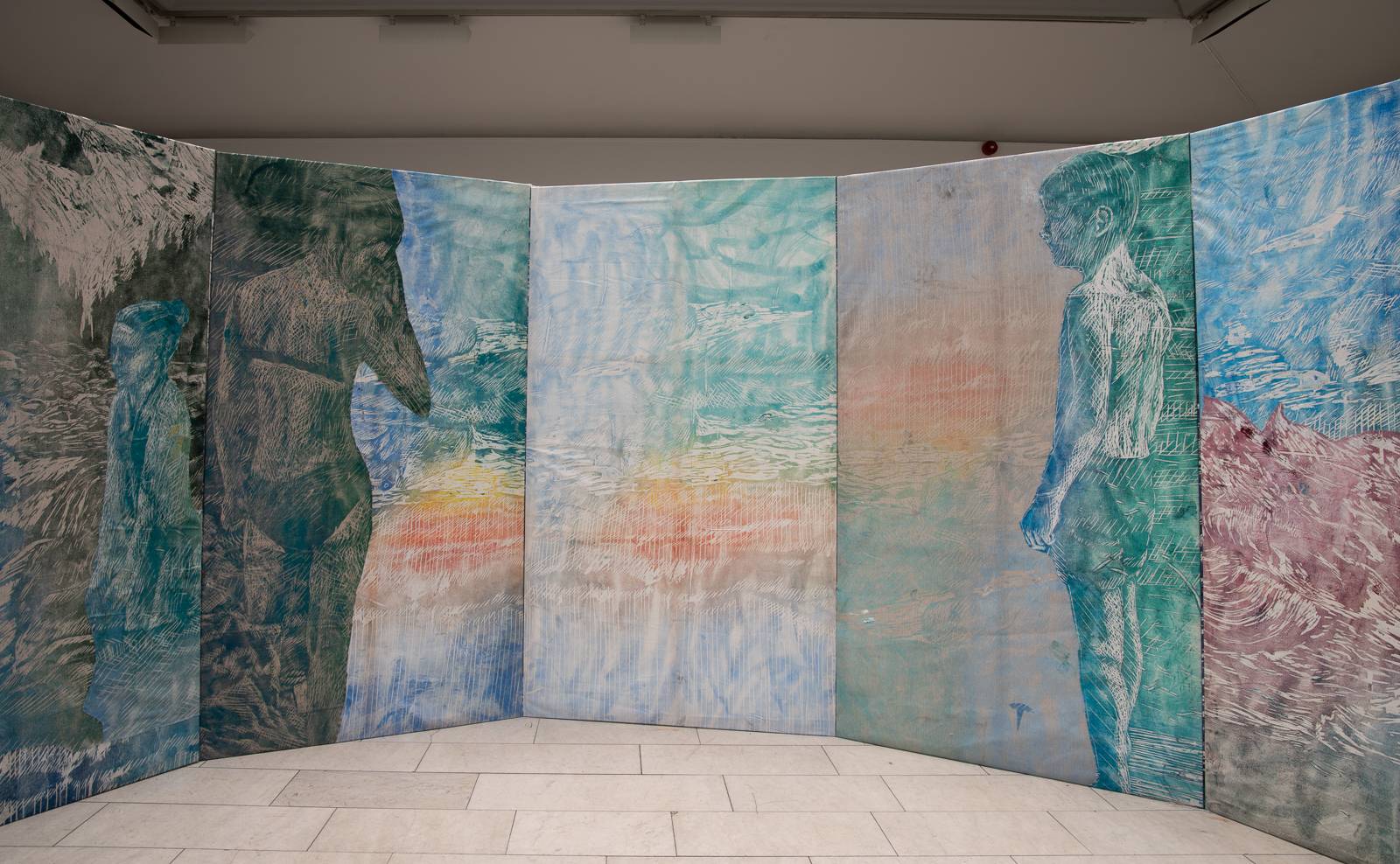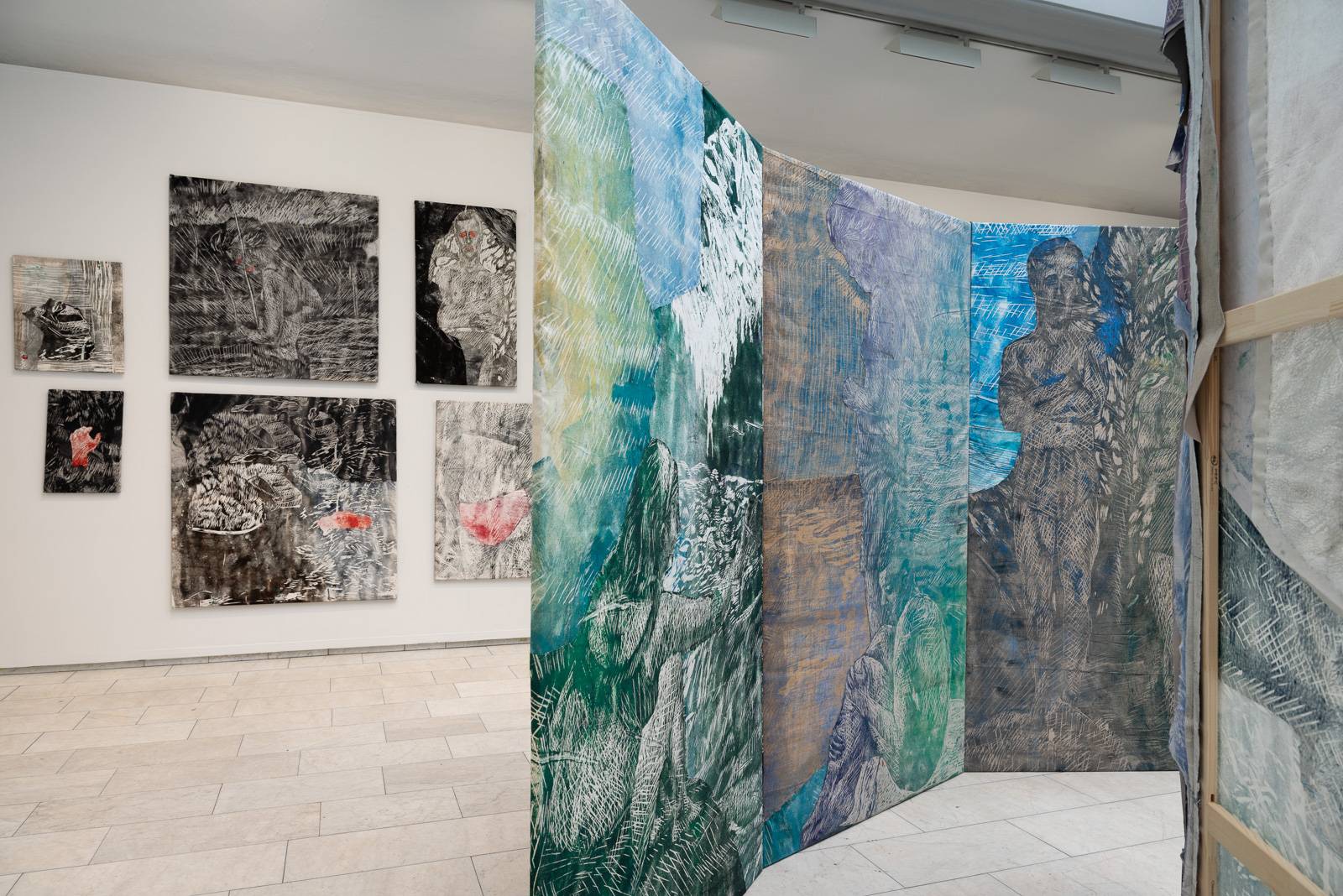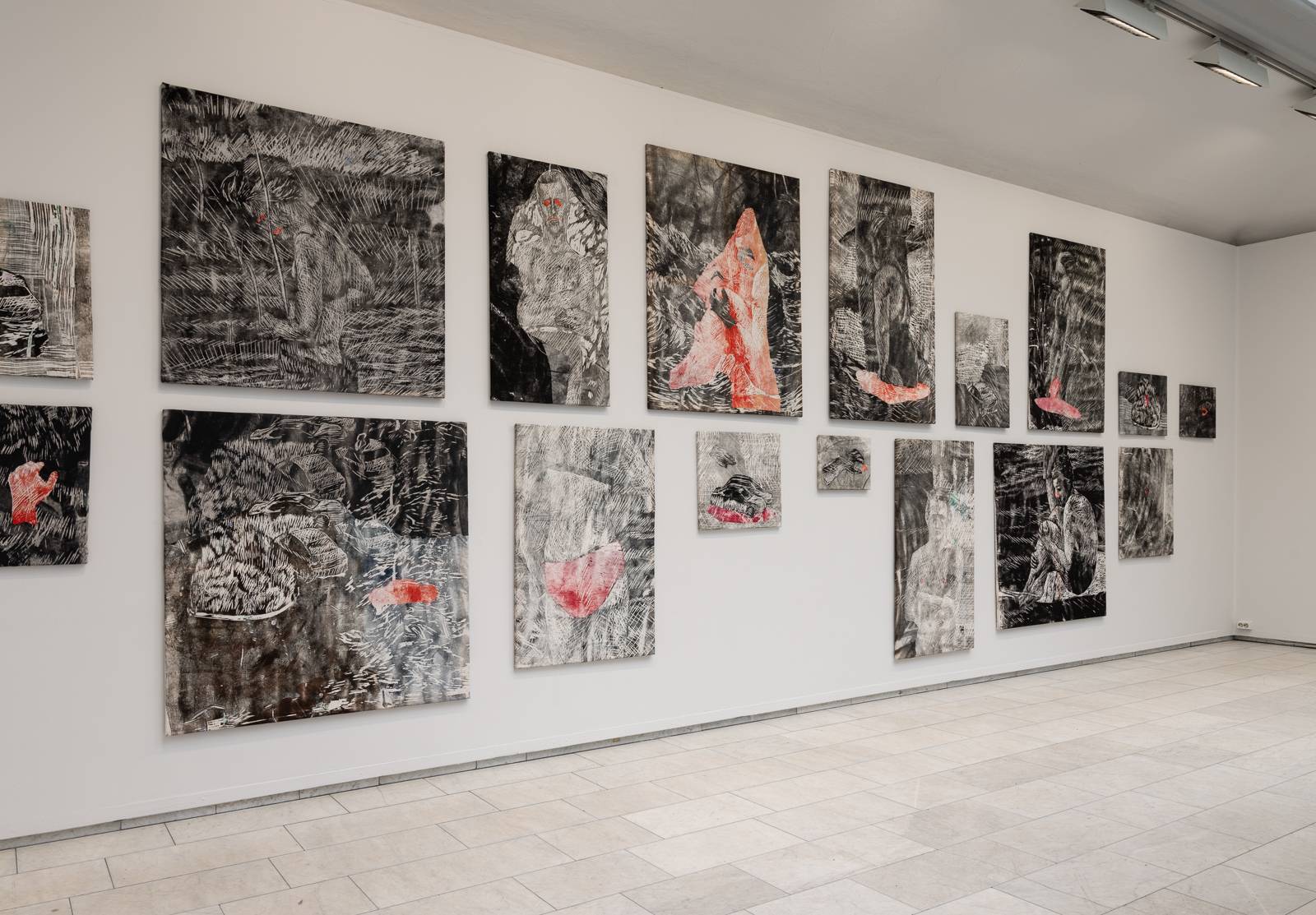Idun Baltzersen
Baderne / The Bathers
The Skylight Space
23.02.23—02.04.23
Social categories such as gender and ethnicity, sexual orientation and social class leave varying impressions on the artworld. Under these conditions Idun Baltzersen began to trace how a Norwegian-born identity can affect artistic choices. The sea as a physical and mythical phenomenon became a unifying reference for her. Through a long tradition of image-making, our comprehension of the sea encompasses everything from idealisation to fear inducement.
In a similar way, in the woodcuts titled Baderne (The Bathers), Baltzersen leaves the bathing figures suspended between an apparent discomfort and a deliberate pose. She visualizes the figures as partially submerged in water or standing ashore on a collage-like beach environment. Their body language signals an ambivalence in the encounter with the uncontrollable nature. As a sublime power, the unsettling forces of the sea are allowed to play out as undulating, rushing waves close by the somewhat hesitant bathers.
In preparation for the exhibition Baderne in the Skylight space, Baltzersen delved into the Swedish artist Eugène Jansson's images of bathers. The painting Flottans badhus (1907) particularly set the tone. It hangs in the Munch Room at the Thiel Gallery in Stockholm. Jansson lived at the same time as Edvard Munch, but his figures appear far more idealistic. Baltzersen is interested in how the narrative of Flottans badhus has shifted from being an idealization of male bodies to being one of desire. Other works of significant inspiration for Baderne, are Munch's motifs of underwater swimmers. Anders Zorn's popular etchings of nude females in the archipelago of Stockholm are also of relevance. Baltzersen's depicted figures are taken from archive photos of swimming teams and bathers.
The exhibition consists of richly colored woodcuts placed in an architectonic spiral. The viewer is invited in among these frame-mounted, head-height woodcuts printed on textile. A series of small black-and-white woodcuts with details highlighted in red is displayed on the wall behind.
Baltzersen's work is characterized by experimenting with various printing techniques, respectively woodcut and assemblage on paper, textile, and wood. By using changing perspectives and monumental images, she challenges the viewer's gaze and the physical integrity of the room.
Idun Baltzersen (b. 1987, Trondheim) has studied at the Art academy in Bergen and Konstfack in Stockholm, where she has lived since 2011. Baltzersen has exhibited in several galleries and museums, the first time in Kunstnerforbundet in 2015 when her graphic works and artist books were shown in a duo exhibition with Guttorm Guttormsgaard. Her work is represented in the Moderna Museet, Magasin III Museum for Contemporary Art, Göteborgs konstmuseum, Uppsala konstmuseum and Haugesund Billedgalleri. Her work has been acquired by St. Olavs Hospital, the Norwegian Art Council, Trondheim Municipality, among others.
The exhibition has received support from Regional project funds, Kunstsentrene i Norge (The Art Centers in Norway).
